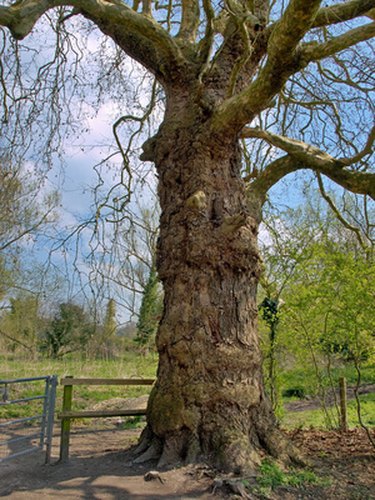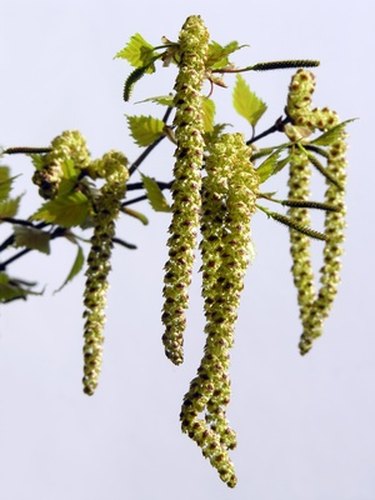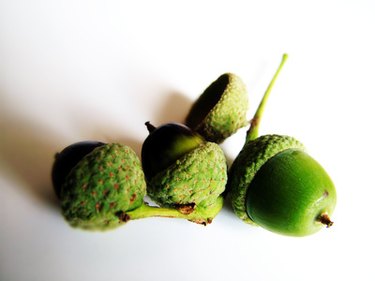
Oaks are broad-leaf deciduous trees that can live for over 200 years. In fact, there is a tree in Mandeville, Louisiana, that is believed to be more than 1,000 years of age! These statuesque trees can grow 100 feet tall with 4-foot-wide trunks. North American oaks can generally be divided into two groups: white and red oaks. All other types of oaks fall within these two species.
Oak Tree Pollen
Video of the Day

Male and female flowers on an oak tree are situated on different parts of a branch. It is the male flower that contains the oak pollen. Male flowers, or catkins, look like long worms hanging from the oak tree during spring. After the stamens release pollen into the air, the catkins fall to the ground. The pollen hangs mist-like in the air before descending onto the female flowers and fertilizing them. Oak trees use the wind to pollinate the female flowers.
Video of the Day
Pollen Season
Oak tree pollen adversely affects a large number of allergy sufferers. This is because the tiny grains are carried on the wind and irritate sensitive mucous membranes. Oak pollen season can start as early as February and run through the end of June.
Acorns
After pollination, the female oak flower starts to develop into an acorn. Acorns come in a variety of colors depending on which type of oak they come from. They may be light brown, brown, yellow, pale or deep green. They can vary in size from little round ones barely a fingernail in length to approximately 2 inches in length.
Acorn Production

An oak tree must be 20 years old to produce acorns. One crop of acorns is produced each year. Acorn production generally increases each year. By the time a tree is about 70 years of age, it can bear thousands of acorns annually. Acorn development is dependent on factors such as weather, since late frosts can destroy the flowers and consequently the acorns. Only one out of every 10,000 acorns has a chance to develop into an oak tree.
Acorn Pests

Acorn weevils lay their eggs inside acorns and can destroy up to 90 percent of the crop. The weevils drill small holes into the acorns, deposit their eggs and plug up the holes. When the larvae hatch, they eat the insides of the acorns and burrow their way out. Squirrels are among the many animals that love to eat acorns. Deer and birds such as bluejays, wild turkeys and woodpeckers also eat acorns.